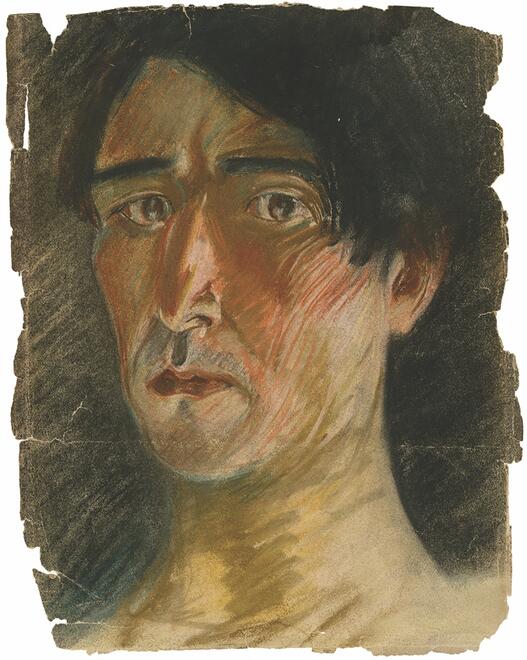еврейский художник Maud, Zuni (1891-1956)
Его имя тоже нашла в книге
"500 лет идишской поэзии".
еврейский художник Maud, Zuni оформил страницы красивыми графическими рисунками.
https://books.google.co.il/books?id=PeG-AAAAQBAJ&lpg=PA319&ots=hu-nF_bH1y&dq=maud%20artist%20jew&pg=PP1#v=onepage&q=maud%20artist%20jew&f=false
Zuni Maud. זוני מאוד.
)РЕПАРАЦИИ — (от лат. reparatio восстановление) одна из форм материальной ответственности субъекта международного права за ущерб, причиненный другому субъекту в результате международного правонарушения
Yitskhok Yitzhok Moyed - Isaac Maud
Puppeteer artist, designer, writer, humorist.
Born Yitskhok Moyed around 1891 in Vashlikov, Grodno oblast, Polish Lithuania, his father was shames (beaded).
Studied at the kheder then in yeshivas in Bialystok, Bielsk, Czestochowa and Warsaw, several times fired for illustrating the study books or drawing on the tables ...
At Purim, he plays Purim shpiln which he knows by heart.
In 1905, he emigrated to the United States, with his brother, to live with an uncle.
At Ellis Island, Yitskhok Moyed becomes Isaac Maud.
He earns his living as best he can while continuing artistic studies in the evening.
Little delivery boy on the East Side in New York, everyone calls him "sonny" (son); he decides to keep this name by "Yiddishizing", which gives Zuni.
He has a deep sense of humor, a liveliness that combines with a certain melancholy.
He is steeped in the Jewish culture he learned.
One of his favorite gags, when asked why he wears a chain without his pocket watch, is to ask "maybe you want to know what time it is not?"
He produced cartoons and comics for several newspapers, illustrated dozens of books (including many children's books), made calligraphies for the covers and title pages of hundreds of books, and designed stage sets.
In 1924 with his friend Yosl Cutner, they created sets and theater costumes and even puppets for a play by Goldfaden, "di kishefmakherin" (the witch).
Following this, they together create a Yiddish puppet theater, which is called Modicut (by their two names).
The success is immediate.
They tour the United States and Canada, and in summer work in the Poconos, in a vacation spot, Zumeray, run by Zuni's brother and his sister-in-law and frequented by politicians, artists, and left-wing writers.
Zuni teaches theater there.
In 1929, Modicut's success was such that they toured Europe: London, Paris, Brussels, Warsaw, then all of Poland following the phenomenal success they encountered, finally Vilna.
They are invited to the USSR, where they are forced to adapt their pieces so that they are politically correct.
Invited to extend their stay, they became friends with many Russian Jewish writers and artists.
Returning to the United States in 1932, they cease their association.
Yosi Cutler dies three years later in a car accident, leaving Zuni Maud inconsolable.
He continues to draw, paint, sculpt, write, give puppet performances, but the heart is no longer there.
In recent years, he has lived with his brother and sister-in-law in Zumeray.
In April 1956, news arrived of the imprisonment and assassination, ordered by Stalin, of Yiddish writers in the USSR (night of assassinated poets, 1952).
Zuni Maud had made friends with many of them during his trip to the USSR.
It was at the offices of Frayhayt that he received confirmation of this information, which the anarchist newspaper had first denied.
He died of a heart attack the following night.
https://www.google.com/search?q=%22Zuni+Maud+Yiddish+Bohemian&rlz=1C1OKWM_enIL856IL856&sxsrf=ALeKk026Js_lFt-wbpGj4t8-GvFUzUhjsw:1590730316465&source=lnms&tbm=isch&sa=X&ved=2ahUKEwj30cibrNjpAhVTXhUIHQCKAPMQ_AUoAXoECAsQAw&biw=1280&bih=625&dpr=1.5



Комментариев нет:
Отправить комментарий